All over Europe, Jadwiga's name was mixed with mud. The official papal tribunal publicly ruled whether she was an adulteress. And even her own husband, King Władysław Jagiełło, did not believe her explanations.
The Austrian prince Wilhelm Habsburg was the epitome of class and gentleman. But he was only one until the girl he wanted to put him up.
History remembers well the first chapter of his inept endeavors for the Polish crown. The young dynast was only eight years old when he married the then four-year-old Hungarian princess, Jadwiga Andegaweńska . The bizarre ceremony was fully legal and binding. However, she required the relationship to be consummated in due course. Otherwise the marriage could be easily and unilaterally broken.
Aware of the requirements, Wilhelm, already in 1385 (i.e. at the age of fifteen), came to Krakow, where a new queen had recently resided:the same Jadwiga Andegaweńska, whom he married when she was still a little toddler. Now the girl was eleven and a half years old and she wore the crown that the Austrian dreamed of.
William's father obtained a special episcopal consent that would allow him to organize the wedding night at such a young age. Jadwiga, enchanted by the stranger whom she remembered from her carefree years of early childhood, and at the same time scared by the projects of Polish magnates who wanted to give her hand to the barbarian ruler of Lithuania, also agreed to everything.
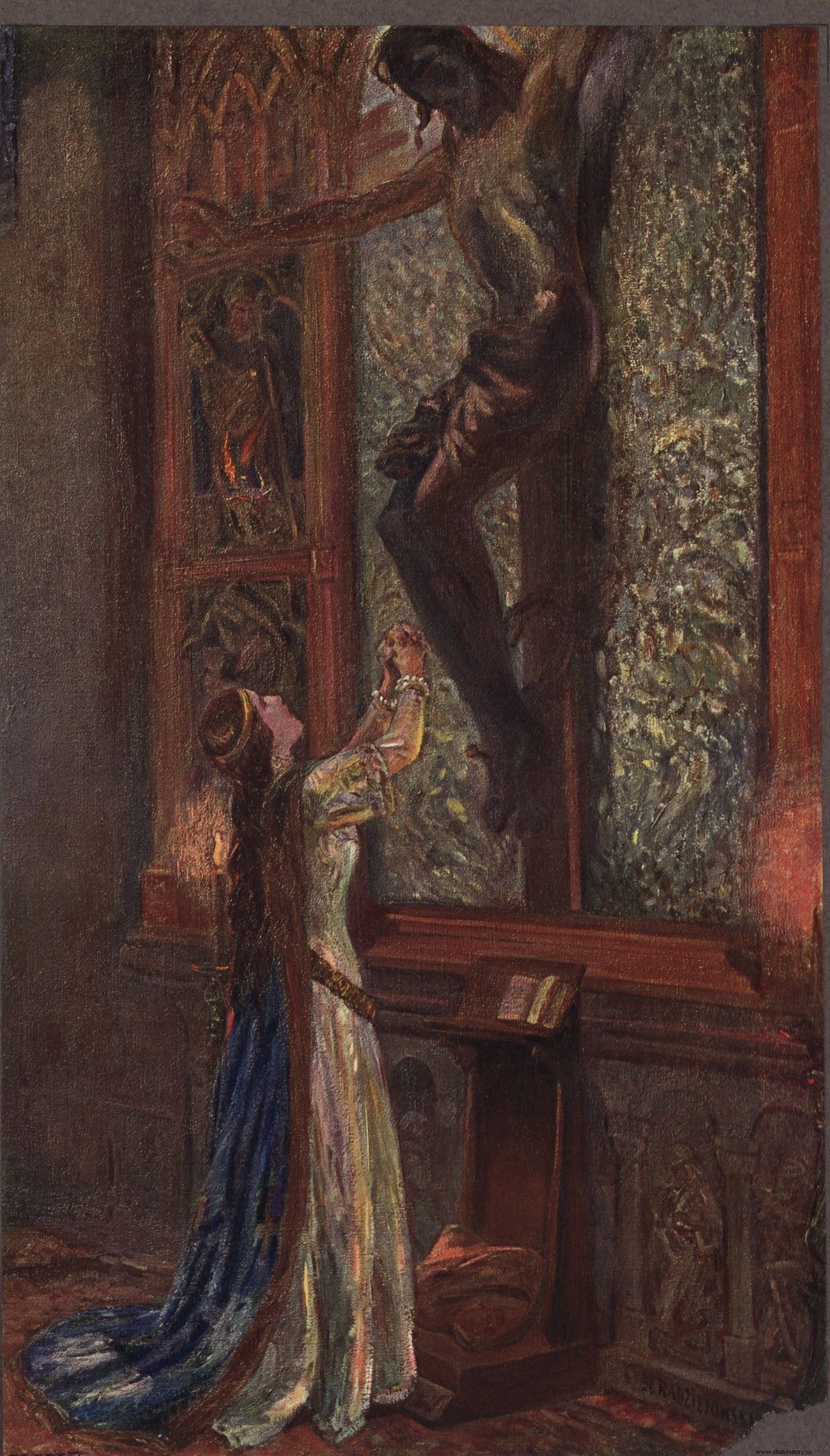
Queen Jadwiga agreed to sever her relationship with William Habsburg only after long reflection and fervent prayers.
It was only at the last moment that the secret wedding night was foiled, and Jadwiga herself - convinced by the people around her - renounced her relationship with Wilhelm, choosing instead to marry Jagiełło. So a union capable of bringing two states together into a new power and the Christianization of the last country in Europe that was officially shackled by paganism .
This is how much textbooks teach. But William's story did not end when the black soup was served. It is only her second act that reveals how regrettable the young Habsburg was.
Two weeks of bed fun
After the gates of Wawel were placed behind him and he was forced to skip from Krakow, William's layers of chivalry were quickly exhausted. And when, after a dozen or so days, he reached Vienna, he looked rather like a not very clever and testosterone-buzzing muscle who was accepted for good studies only thanks to a sports scholarship, rather than a dignified and tactful dynasty
He had failed to get the eleven-year-old princess to bed, and he considered it a cause for great shame. He did not want to be mocked by courtiers, that his father questioned his talents, and his relatives began to laugh at the fact that, as a man, he did not live up to the occasion. He didn't want all of this, so… he started lying off the beaten track.
When he arrived home, he had his own version of the story compiled. To the left and to the right, he was announcing that he had been driven out of Krakow, but only after he had successfully crept into Jadwiga's alcove. Maybe he only reported one wedding night at first. Immediately, however, he embellished his erotic fairy tale. According to the new version circulating among the courtiers and subjects, Wilhelm slept with Jadwiga as her husband for "many nights" or, finally, for two weeks.
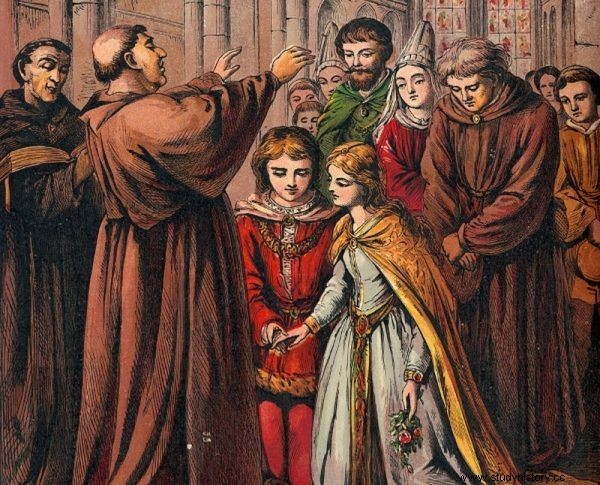
Jadwiga married Wilhelm as a four-year-old girl. The prince did not accept, however, that after growing up she was allowed to change her mind ...
Uncrafted stories and bragging fell on fertile ground. William proudly flaunted his alleged sexual conquest, and local singers, poets, and historians echoed his dashing account with great enthusiasm.
New version of history
Thanks to the Austrian chronicle of 95 reigns We know, for example, what a prince, with too much imagination, felt about his would-be mother-in-law. Elizabeth of Bosnia - the Hungarian queen who agreed to break the relationship between Jadwiga and William - is described in the book as a "cowardly mother", thanks to which not only the young Habsburg, but also God the Father suffered "great unrighteousness".
The author of the little book was convinced that the prince "often spent nights" with Jadwiga, that he was even proclaimed the Polish king and that ... it was only Satan that made the Bosnian woman decide suddenly to give her married daughter to a pagan from Lithuania.
Even sharper opinions are expressed in relation to Jadwiga herself. And there is no doubt that the fifteen-year-old master of courtesy and good manners himself put it into circulation. The readers of the chronicle had the opportunity to find out that Jadwiga is basically a dissolute Lolita, whom her mother "gave up for correction". William, on the other hand, is a man of honor who directly announces that ... he does not intend to "fight for a harlot" .
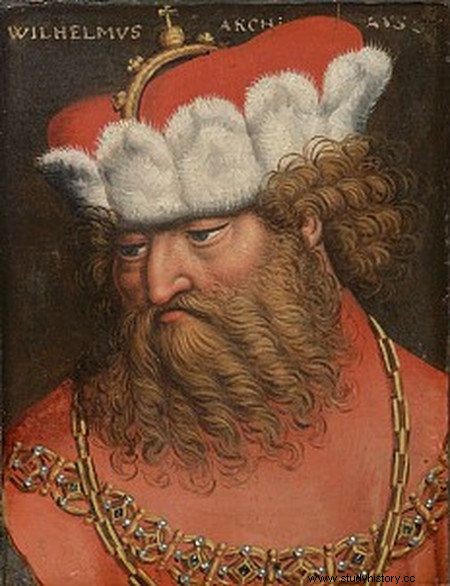
Wilhelm Habsburg. He considered his would-be partner a prostitute and adulteress. Plus, he was spreading nasty lies about her.
So he fought mainly for the unfortunate teenager (the same one who was ready to secretly give herself to him until the last moment!) To destroy her reputation and to put her marriage to a decisive test for the good of the country.
Harlequin for the era
The story of the love triangle between a noble Christian prince, an unfaithful whore and an uncouth savage quickly became material for a true harlequin; it was repeated and twisted by cheap sensation-loving authors from all over Europe.
The Burgundians and Italians talked about the betrayal of the Polish queen. And a certain writer from Padua, on the basis of this story, created a kind of adventure novel. However, the Teutonic Knights had the most to say:the greatest enemies of both Lithuanians and Poles.
The Franciscan responsible for Annals of Toruń wrote about the illegally broken relationship between Jadwiga and Wilhelm . The monastic official and chronicler, Jan of Possilge, also mentioned him. The first one emphasized that the young queen "copulated" with the Austrian ; the second not only noted that there was a "bodily relationship" between them, but also ... that they genuinely loved each other.
Gossiping Pope
History mutated and pupated depending on the tastes of the readers and the fantasies of the authors. As a result, the role assigned to Jadwiga in it also changed. Once a girl was a debauchery, other times only a passive victim of a barbarian from the east. Her life was put under a scrutiny, people saw in it harm, pathology, and even violence.
Aeneas Sylwiusz Piccolomini, Italian erudite, who will become Saint Pius II in the future , he claimed, for example, that Jadwiga was the legal wife of Wilhelm and that she had never voluntarily fulfilled her marriage obligations with Jagiełło. Thus, a Lithuanian could only associate with her by means of coercion and repeated rape every night.
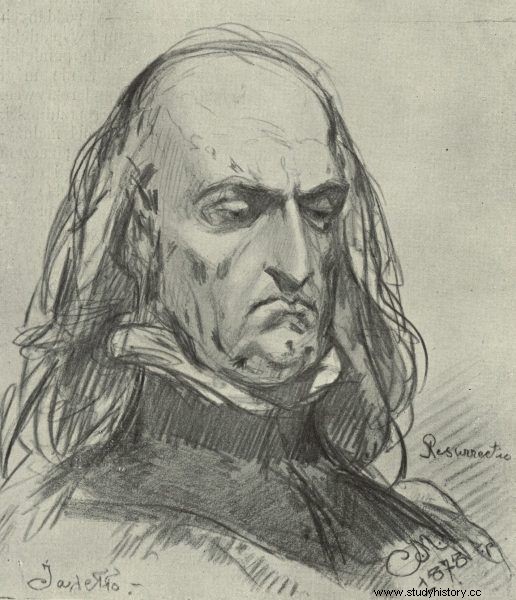
Władysław Jagiełło in an unpublished sketch by Jan Matejko.
Also Theodoric of Nieheim, an influential member of the papal chancellery, believed that Jagiełło had a wife (or rather a concubine) against her will.
Propaganda tube
They only shared radical opinions. But there were also people willing to go much further. For the authorities of the Teutonic Order, all doubts about the marriage of the Polish queen were water for the mill.
Propagandists employed by the great master spread throughout the continent that Jagiełło was a "bad dog" and a false, calculating neophyte who would remain the persecutor of Christians for all time. He was mixed with mud, also paving Jadwiga, who maybe under duress, but still entered into an "adultery relationship".
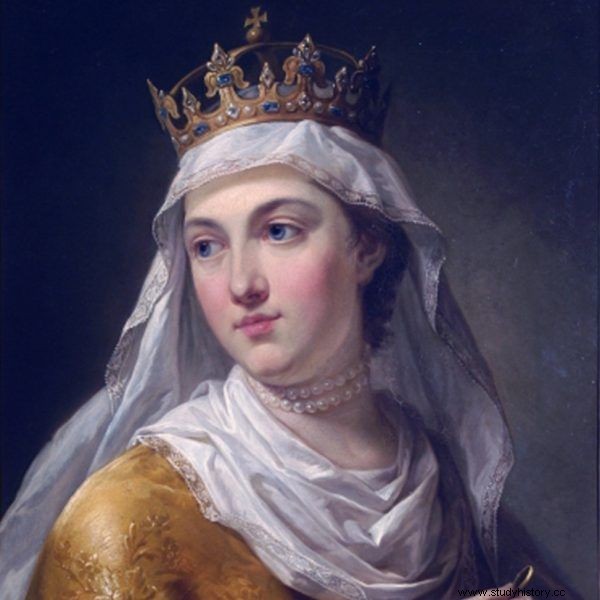
Queen Jadwiga. Portrait by Marcello Bacciarelli.
Religious diplomats were also no less active. As early as 1386, the Teutonic Knights made an alliance with two Pomeranian dukes. The alliance, it should be emphasized, aimed at Poland. The treaty explicitly stated that Jagiełło robbed Habsburg's lawful spouse and that this act requires not only an armed response, but also the dissemination of the truth to all and sundry.
The artificially inflated scandal was becoming too loud to be ignored any longer. In the papal curia, who had so far been enthusiastic about both Jadwiga's wedding and the vision of Christianization of the last pagan country in Europe, it was murmured that the pope had rushed too much into accepting Jagiełło into the Christian community. And he believed much too easily that Jadwiga had avoided sin.
Lawful spouse
It was in this atmosphere that the Austrians made an official complaint against the Polish queen in Rome. They demanded the annulment of her relationship:"as a marriage bond concluded against the canonical obstacle and therefore possessing the trait of bigamy ". They also wanted the girl to be forced back into the arms of William - her "lawful spouse".
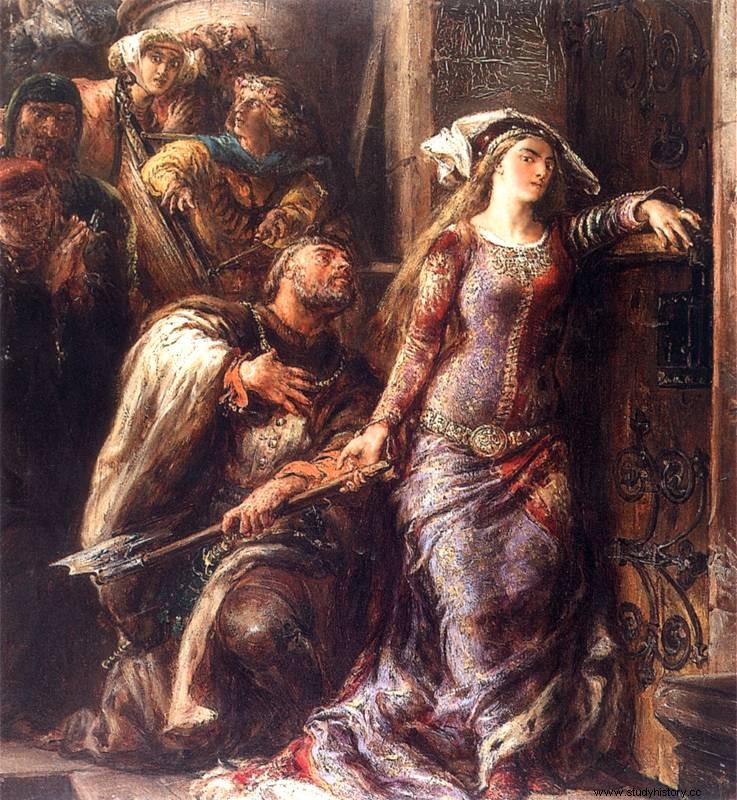
According to a story repeated by Jan Długosz, Jadwiga was ready, for example, to smash the gate of Wawel with an ax to allow William to his bed. This act of devotion in the future did not prevent the Austrian prince from destroying her reputation and poisoning her life.
The Teutonic Knights also sent their own complaints to the Holy Father. And they did not spare the resources needed to open the official trial. The proceedings in the apostolic see began in 1387 and lasted for several months. It was a derogatory and extremely painful experience for the young monarch.
Her father, Louis of Anjou, known in Hungary as Louis the Great, was considered one of the most pious rulers of his time. Grandmother Elżbieta Łokietkówna died in the odor of sanctity; great-grandmother Jadwiga Kaliska passed away as a nun. Meanwhile, she was in danger of being remembered as a dissolute sinner and the heroine of bad romance novels.
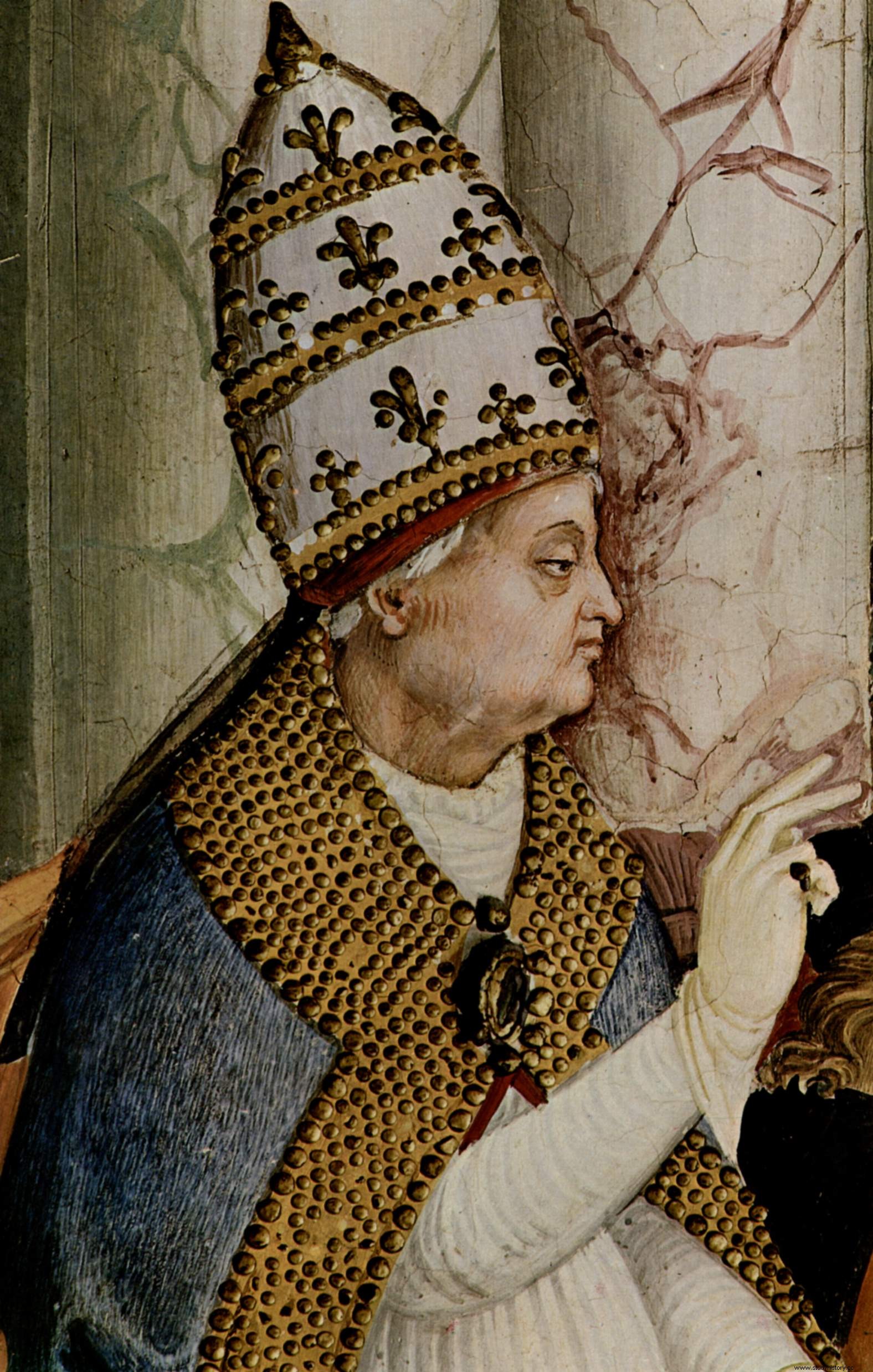
Pope Pius II. He, too, strongly believed in the disgusting rumors about Jadwiga.
The Habsburgs did not have any strong arguments or evidence in the case. William did not even deign to appear before the papal tribunal and repeat the accusations personally. He didn't have to do this. He knew that the war of words had already been won when holy father Urban VI accepted his complaint for deliberation. He managed to sow the seeds of doubt even in the minds of people who were sincerely devoted to Jadwiga. It is hard to find a better example than the Polish chronicler Jan Długosz.
The lie everyone believed
He did not hide that the figure of Jagiełło's first wife fascinated him. And that he considers her coronation to be one of the best things that could have happened to Poland. At the same time, however, having read the foreign chronicles, Długosz was unable to shake off the conviction that Jadwiga - whatever good one might say about her - actually committed bigamy.
In his opinion, the ruler "realized that many people knew well that after officially taking the marriage vow for fifteen days with the aforementioned prince of Austria, William, she would visit the bed room and that there was even a physical fulfillment of their marriage. " Długosz even claimed that this sin of the queen had a burden on the further fate of the state. God no longer forgave Poles for offenses and touched them "painfully with many penalties in the form of disorderly governments and kings who supported Lithuanians more than Poles".
If the intellectual, convinced of Anjou's sanctity, was deceived, it is not hard to believe that Jagiełło gradually began to torment himself by the nasty rumors. In 1388, he began making scenes of jealousy for his wife. And the life of Jadwiga herself, spit on, tormented and flooded with accusations, turned into hell. And this is probably what Wilhelm Habsburg dreamed of.
***
This is just the very beginning of the fascinating story of a woman who - contrary to the wishes of her parents and the expectations of her surroundings - was to become not only a queen, but even a king. You can read more about Jadwiga Andegaweńska and other extraordinary ladies of this era in my new book: “Ladies of the Polish Empire. The Women Who Built a Power " .
Selected bibliography:
- Halecki O., Jadwiga Andegaweńska , Universitas, Krakow 2000.
- Kellog C., Jadwiga. Poland’s Great Queen , Macmillan, New York 1931.
- Krzyżaniakowa J., Ochmański J., Władysław II Jagiełło , Ossolineum, Wrocław 2006.
- Kuczyński S.M., The critical partition of Jan Długosz's "Polish history" in 1385 , "Studia Źródłoznawcze", vol. 3 (1958).
- Kwaśnicka M., Jadwiga , Saint Nicholas Foundation / Redaction of "Teologia Polityczna", Warsaw 2015.
- Maciejewska W., Jadwiga, the Polish queen , Krakow 1934.
- Mańkowski J., Birthday of Queen Jadwiga Andegaweńska and the day of her wedding with Władysław Jagiełło in the context of the blood act. Philologist's comments on the interpretation of sources , "Annals of the Lublin Genealogical Society", vol. 5 (2013/2014).
- Misiąg-Bocheńska A., Two dates in the life of Queen Jadwiga , "Polonia Sacra. Theological Quarterly ”, vol. 2, issue 3 (1949).
- Nikodem J., Gniewosz - Jadwiga - Wilhelm. Criticism of the message "Annales" by Jan Długosz , "Przegląd Historyczny", vol. 98 (2007).
- Nikodem J., Jadwiga, King of Poland , Ossolineum, Wrocław 2009.
- Przybyszewski B., Jadwiga and Wilhelm , "Analecta Cracoviensia", vol. 7 (1975).
- Sroka S.A., Królowa Jadwiga , WAM, Krakow 2002.
- Tęgowski J., The interregnum after the death of Ludwik Węgierski and the genesis of the union between Poland and Lithuania [in:] Historical studies from the 13th – 15th centuries , WSP Publishing House, Olsztyn 1995.
- Wyrozumski J., Królowa Jadwiga. Between the Piast and Jagiellonian eras , Universitas, Krakow 2006.
- Zakrzewski S., Accidents of the years 1382–1386 in connection with the genesis of the Union [in:] Diary of the 5th Congress of Polish Historians in Warsaw , Polish Historical Society, Lviv 1931.
